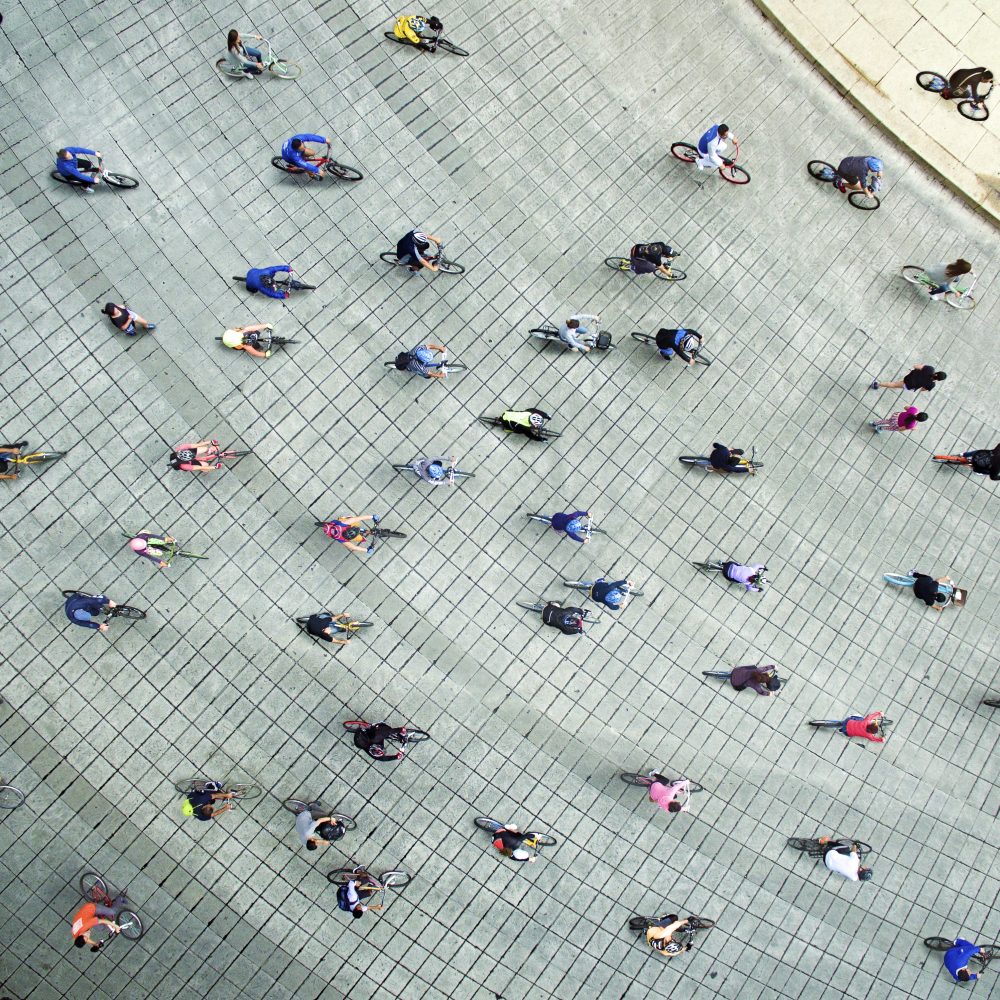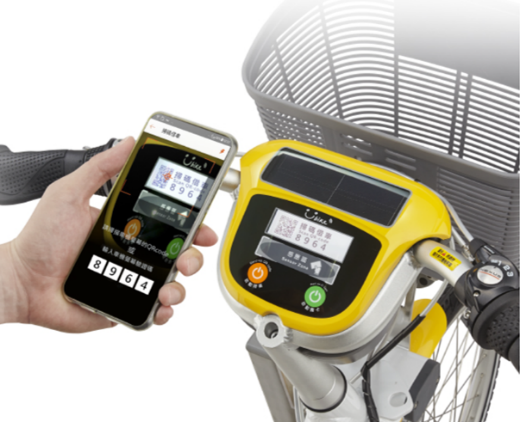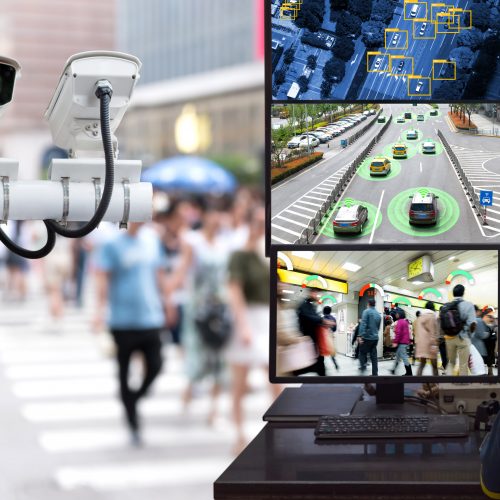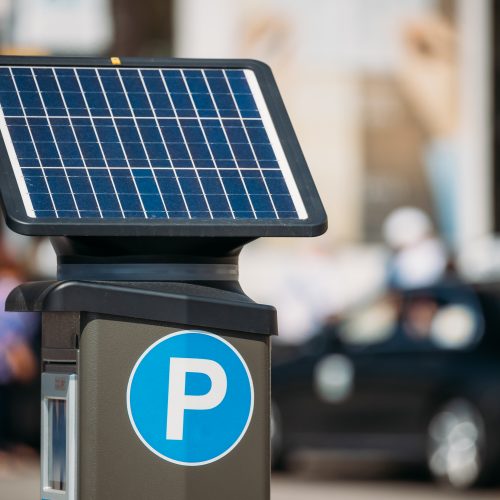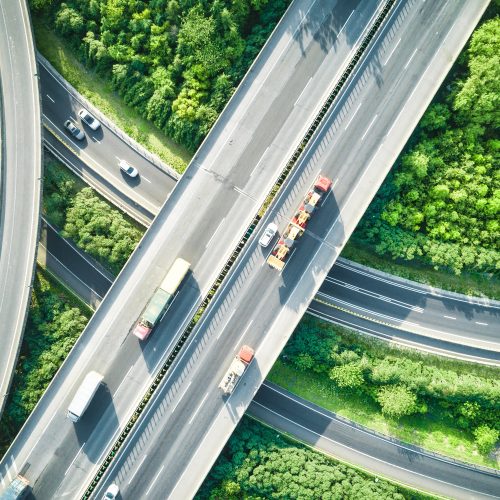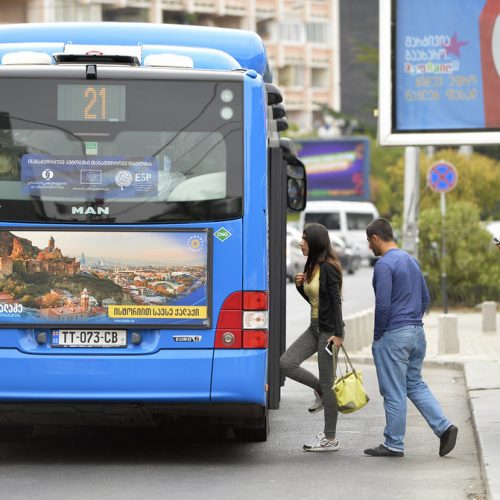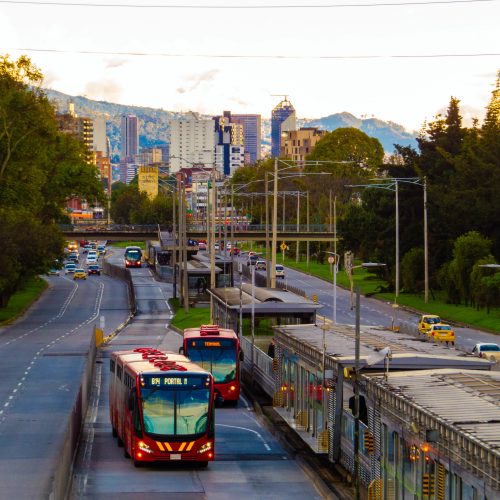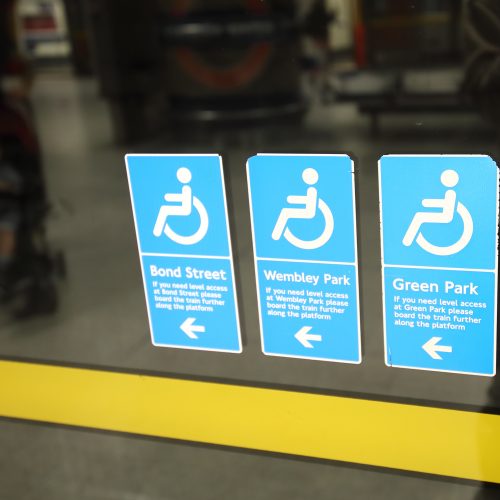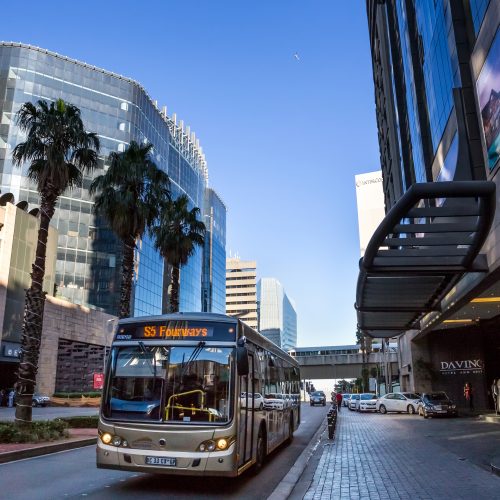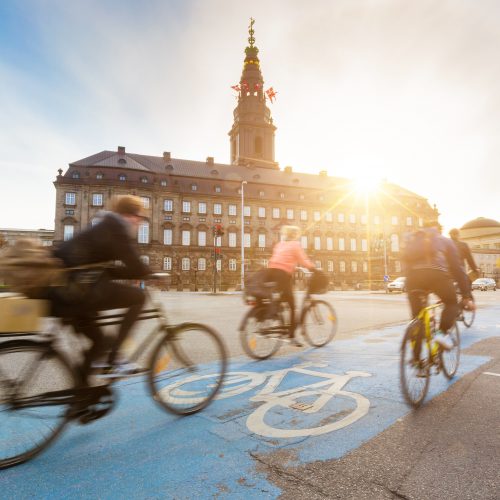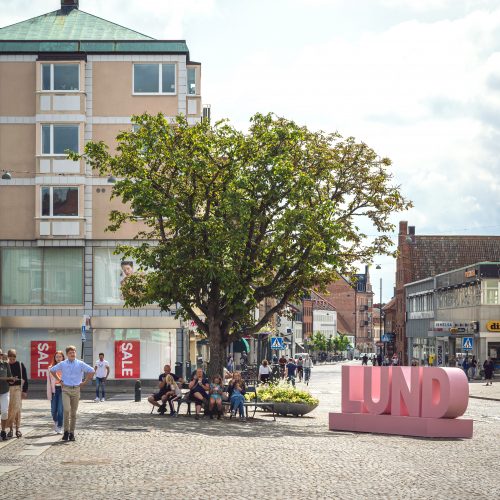Context and policy overview
Since 2001, the number of private motorised vehicles in Taipei has grown by 22 per cent to 816,000 from 667,000.[1] In addition to city residents’ vehicles, millions of vehicles from adjacent cities commute to Taipei, creating additional pressures on the city’s vital transport networks in peak hours. This increase has taken a major toll on traffic conditions and air quality. To reduce these challenges, Taipei spent years building an extensive public transport system. However, the usage rate of public transport stagnated due to the lack of first- and last-mile solutions. In some areas, people were unwilling to choose public transport because subway stations or bus stops were so far away from where they lived or worked.
Implementation
To promote and popularise green transport, in 2009, the City of Taipei, together with local manufacturer Giant Bicycles, launched the public bike-sharing scheme, YouBike, as a first- and last-mile shuttle. It has allowed commuters to seamlessly enjoy the public transport system ever since. The scheme allows users to rent and return bicycles at unattended bike stations across Taipei on a pay-as-you-go basis; no membership fees are involved.
Taipei City’s main objectives in introducing YouBike were to:
- encourage the public to use more environmentally friendly modes of transport
- develop an identity for Taipei as a green and cycling-friendly city
- improve the quality of life, health and fitness of its citizens
- improve social inclusion by increasing the accessibility of public transport.
Phase 1: YouBike pilot project, 2009-12
The first YouBike scheme launched in March 2009 with a budget of €801,110 (NTD 25million),[2], [3] in the downtown Xinyi District of Taipei City. It comprised 11 rental stations near subway systems and local businesses. However, the project got off to a slow start, partly because coverage was limited ‒ only 500 bicycles were provided, rendering YouBikes hard to find and return[4] – and partly because the cost of rental was not competitive compared with other modes of public transport. City residents also complained that it was too complicated to rent a YouBike. Moreover, even where it was possible, at the outset, before proper infrastructure was in place, cyclists often had to share bike lanes with scooters and other motorised vehicles, leading to concerns about safety.
Phase 2: YouBike 1.0, 2012 to 2022
To meet the challenges of the initial launch, the city authorities maintained their partnership with Giant Bicycles under a seven-year build-operate-transfer (BOT)[5] agreement signed in 2011. It was officially implemented in 2012 with a total public budget of €8.59 million[6],[7] (NTD 268 million) and rolled out the following measures:
- Expansion of the YouBike network
The initial wave of expansion saw an additional 30 rental stations and 960 bicycles across Taipei, extending the network from the east to the west of the city. The new stations were located in the Zhongshang, Daan, Nangang and Songshan districts.[8]
- Simplification of the rental process using digital technologies
The rental process was one of the major pinch points for users during the pilot. Users needed to register their membership of the scheme by visiting a physical location with ID card and an EasyCard (a stored-value smartcard for travel in Taiwan). To encourage use, the rental process was simplified. Today, anyone with an EasyCard or smartphone can register as a member on the YouBike mobile app or at a rental kiosk, then pay with an EasyCard to rent a bicycle. A contactless multi-function electronic service (EasyCard and smartphone Easy Wallet) integrates with the MRT system, buses, parking lots, special agencies and other payment methods, greatly enhancing convenience and saving time.
- Subsidisation of rental costs[9]
The city administration also decided to cover the cost of the first 30 minutes of every trip, making the programme much more attractive to patrons from a financial standpoint. Even though the subsidy was curtailed in 2015, YouBike remained popular, as renters still enjoyed a discount if they rented a bike after using the subway or a bus.
Since 1 April 2015, users who take the MRT or bus in Taipei City with an EasyCard can rent a YouBike within an hour of fare payment for €0.16 (NTD 5)[10] for the first 30 minutes. The charge increases gradually as follows:[11]
- 30 minutes to 4 Hours - €0.32 (NTD 10)[12] per 30 minutes
- 4 hours to 8 hours - €0.64 (NTD 20)[13] per 30 minutes
- More than 8 hours - €1.28 (NTD 40)[14] per 30 minutes
- Upgrade and expand bike lanes
In the initial stages of the YouBike programme, the media, the public and various politicians questioned the viability of the system, because of the expected challenges associated with separating cyclists from dedicated motorbike lanes. At the time, the rights of cyclists were not adequately considered.
In response, the Taipei City authorities reduced the road area allocated to private motor vehicles. They also made sidewalks wide enough to accommodate both bicycles and pedestrians, providing a safer alternative for cyclists. To protect pedestrian safety, efforts were made to create a friendly and polite cycling culture by educating cyclists. Moreover, an online suggestion platform was established to allow citizens to suggest locations for new YouBike stations.
- Bicycle upgrades
Giant Bicycles made three changes to the body of the YouBike:
- It reduced the weight of the bike by replacing the metal basket.
- It added drainage holes to the saddle to ensure the seat remained dry on wet days.
- It moved the lock position forward for smoother pickup and return.
These improvements have significantly boosted the popularity of YouBike. Since July 2014, the scheme has been made available in all 12 of Taipei’s administrative districts. Taipei City signed another four-year BOT contract with Giant Bicycles to 2022, worth €2.46 million (NTD 76.7 million),[15], [16] and launched the next generation of YouBike.
Phase 3: YouBike 2.0 with upgraded system, 2020 to 2022
Learning from YouBike’s greatest competitor, oBike, the city authorities and Giant Bicycles launched an updated version ‒ YouBike 2.0 ‒ to create more economic benefits for the business: [17], [18]
- Smart panel: more rental methods and fewer missing bikes
YouBike 2.0 is equipped with a smart panel that controls the rental and return processes. Users can rent YouBikes by EasyCard, credit card or by scanning a QR code. A GPS positioning system is incorporated into the panel, which has reduced the number of missing bikes to fewer than three in 10,000.
Figure 1 Smart panel Source: YouBike (2022)
- Simplifying the YouBike 2.0 docking station
The adoption of the smart panel moved the rental and return device from the dock to the body of the bike, while a solar panel generates electricity. There is no longer a need to install underground pipes and cables for internet and electromechanical structures in the docking station, significantly reducing the land area required for each dock, as well as the installation time and long-term costs. Land requirements have thus become more flexible, with denser docking stations now possible in narrow streets and irregular locations.
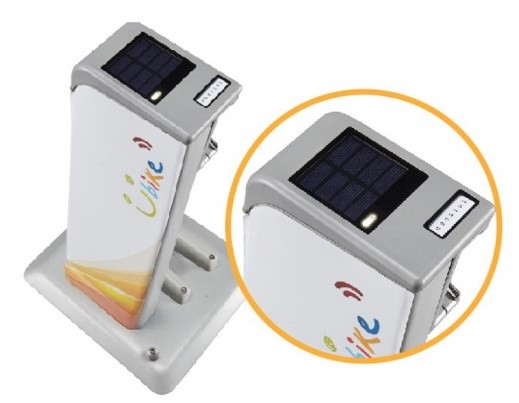
Figure 2 Solar panel dock Source: YouBike (2022)
- Upgrading the YouBike bicycle
The most significant difference to YouBike 1.0 is that the seat can be adjusted in a more user-friendly way and can be done with one hand.
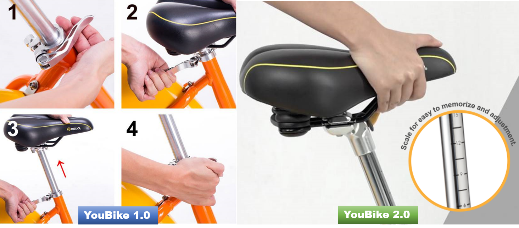
Figure 3 Comparison of YouBike 1.0 and 2.0 Source: YouBike (2022)
YouBike, therefore, has taken into account user needs and adapted to sustainable development needs. It has, thus, improved the value of the brand and its products and enhanced customer loyalty.
Barriers and factors critical to success
- Partnership with Giant Bicycles
Before the YouBike trial was conducted in 2009, Taipei City encountered a budget shortage, so got a new partner on board. The city persuaded Giant Bicycles, already one of the most successful bicycle manufacturers globally, to support the city’s idea as part of its corporate social responsibility (CSR) strategy.[19] Giant Bicycles created a specific production line for YouBikes and covered the costs thereof.
While the first pilot was not that successful, the city and company extended their partnership with a seven-year BOT[20] contract in 2011. Under this BOT model, Giant Bicycles was tasked with building and operating the rental system, while the city authorities would fund the process. The contract stipulated that Giant Bicycles should pay 15 per cent of the annual operating revenue as a royalty to the City of Taipei once that revenue reached €2.24 million (NTD 70 million).[21], [22] All equipment, including the bicycles, rental kiosks and back-office management system, belong to the city.
According to the Department of Transportation, between 2013 and 2018, the city received an annual average royalty of €961,330 to €1.28 million (NTD 30-40 million),[23], [24], [25] making YouBike financially sustainable for Taipei. In 2018, the city extended the BOT contract with Giant Bicycles by four years.
- Budgetary implications
Constructing the rental stations accounts for the bulk of the budget, costing approx. €19.87 million (NTD 620 million) annually.[26] Adding a new rental station costs on average €50,000 (NTD 1.55 million).[27], [28] The monthly operating and maintenance costs per rental station are €416.57 (NTD 13,000).[29],[30]
- Building cycling infrastructure
Taipei City built its first bike lane in 1995 along the city waterfront. At the time, riding bicycles was viewed as a leisure activity, so the lane only extended along the riverside and did go downtown.[31] Between 1998 and 2005, the city widened the lane because it had noticed an increase in popularity, but it was not until 2006 that it started to properly incorporate bike lanes into the planning of the overall urban system. This is what paved the way for the YouBike initiative to take place at the end of the 2000s.[32]
The City of Taipei encountered a wide array of challenges from the start of the YouBike scheme, but it reacted effectively, enabling YouBike to achieve the success it has today.
It is worth noting that the city authorities restructured the bike lanes to boost ridership. In addition to segregated bike lanes, it added asphalt pavements so that cyclists could enjoy smooth rides.[33] Nowadays, the city still solicits the public’s suggestions to continuously improve its cycling infrastructure.
- Improvement in service quality
The low ridership at the beginning of the scheme can be attributed to two factors alongside inadequate bike lanes: an inconvenient service and a lack of financial incentive. To address these issues, the city implemented both financial and non-financial measures. (1) It expanded YouBike coverage and implemented a more straightforward registration process. (2) It offered 30 minutes of free rental to help the public get in the habit of using YouBike. People continued to enjoyed the service even when the subsidy was stopped. This allowed YouBike to maintain a turnover rate of 6.7 (rental times per day/per bike)[34] without free rental.
From a quality perspective, the city authorities considered the use and effectiveness of the back-office management system in conducting sufficient maintenance on the YouBike network, which has proved a great success. The system indexes every bike, allowing city staff to access the bike’s origin and destination information (for example, where it had been parked initially and its current whereabouts) and check how many bikes are left at rental stations. Staff can also search for a bike’s whereabouts using the registration number of the borrower. These measures combine to greatly mitigated the risks of stolen or missing bikes.[35]
The back-office management system also provided ridership data that allowed the authorities to optimise the number of bikes assigned to rental stations in different neighbourhoods.[36] Due to higher ridership, for example, the city allocated more bikes to rental stations between universities and downtown.
- Competition with a private operator
Taipei’s bike-sharing market is open to competition. In 2017, another bike-sharing system, oBike, operated by a private company, entered the market.[37] Unlike YouBike, oBike borrowers could park their bike in any vacant parking space once they had finished using it and did not need to bring it back to a rental station.
Before oBike was removed from the Taiwanese market due to a lack of maintenance and repair on both the hardware and software involved, it was an actual threat to and factor in the success of YouBike.[38] Specifically, oBike prompted YouBike to improve its services and products so that it could expand.[39] As YouBike is categorised as a habitual product,[40] buyer behaviour does not feature heavily in purchasing decisions, as consumers tend to choose the product or service that costs the least. YouBike takes this key factor into account in its new strategy and is willing to offer discounts despite higher equipment costs than oBike. To implement its plan, YouBike cooperated with Taipei authorities, both to lower its financial risks and to forge what could potentially be a long-term plan.[41]
When it comes to product maintenance, YouBike’s approach is in sharp contrast to that of oBike. The city authorities have extended the use of data from the back-office management system and formulated the following rules: every YouBike is inspected at least once every two weeks and a YouBike that has been ridden 100 times will be locked at the station by the system until the maintenance corps can perform routine maintenance. Taipei City and YouBike work continuously to optimise the convenience of the product from a user perspective and, thus, improve the user experience.
Results and lessons learned
When YouBike started its pilot in 2009, it lost €1.6 million (NTD 50 million)[42] in the first three years, only turning to profit in its fourth year achieving an annual revenue of more than €3.2 million (NTD 100 million). It has been able to give 15 per cent of its operating profit to the Taipei City construction fund, equivalent to annual revenue of €480,000 (NTD 15 million) to date.[43], [44]
Over the past decade, Taipei has successfully fostered a more integrated and sustainable mobility network, to which the YouBike scheme has made a substantial contribution. Today, Taipei is considered Asia’s cycling capital and an international role model for other cities when it comes to bike-sharing.
As of 2020, just over 13,000 bicycles at more than 400 stations had been set up to serve commuters. Thanks to this expansion, in 2018, YouBike hit a record 26.2 million annual rentals – an increase of around 19 per cent from the previous year. YouBike also boasts one of the top global usage rates for public bike-sharing schemes, with an average 12 trips per bicycle per day, two to three times that of similar services in New York, London and Paris.[45]
In the bike-lane network, there are 240 miles of shared-use pavements and 70 miles of riverside cycleways outside the city’s flood defence levees, which are hugely popular with leisure cyclists at weekends.[46]
Combined with the implementation of on-street parking fees for cars and scooters, the approach seems to be working – a survey showed an estimated 31.2 per cent of people riding YouBikes had switched from motorbikes and 4.4 per cent from private cars.[47]
While precise figures on the impact of the scheme on environmental pollution and traffic quality are difficult to obtain, some estimates claim a reduction in greenhouse gas emissions of around 33,000 tonnes annually.[48]
Today, many cities across Asia are looking to Taipei as a best-practice example of how to implement a bike-sharing scheme. The success of YouBike offers several valuable lessons for other cities:
- A positive user experience is essential, for example, sufficient bike coverage around the city, regular maintenance and dedicated lanes for cyclists.
- An easy registration process is key to building a loyal ridership. Smartphones and apps are a good low-cost solution to simplifying registration.
- Financial subsidies from the city may be needed to convince people to sign up to the system, though these can be discontinued in the long run.
- BOT models can be an effective way of reducing the financial burden for the city, yet successfully setting up a bike-sharing system.
- Open competition has contributed to YouBike’s success. The fierce competition YouBike faced from oBike motivated it to expand its network (more bikes, more rental stations) while ensuring good service quality.
- Pay attention to environmental protection and sustainable management concepts, and implement effective land use to expand more service locations and potentially increase the scope of the business.
Links to similar initiatives
- Paris, France: Vélib’ Métropole
- Copenhagen, Denmark: Bycyklen
- Barcelona, Spain: Bicing








